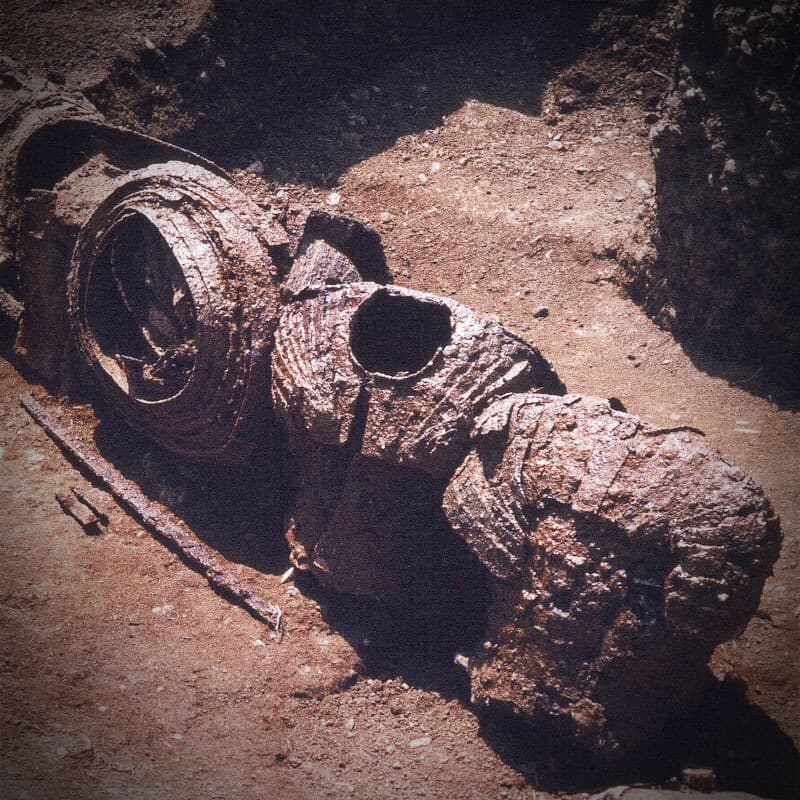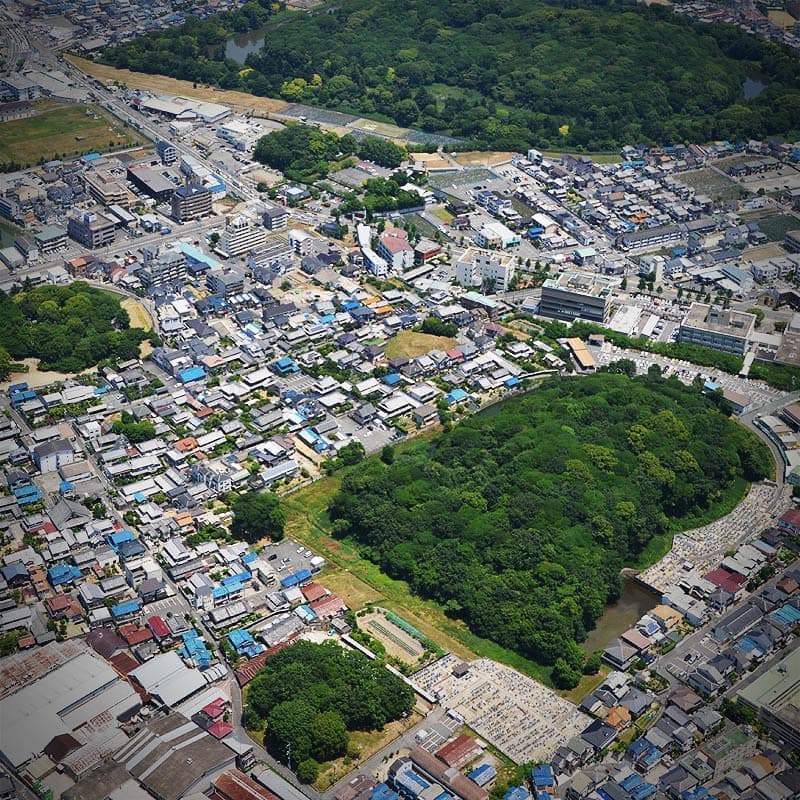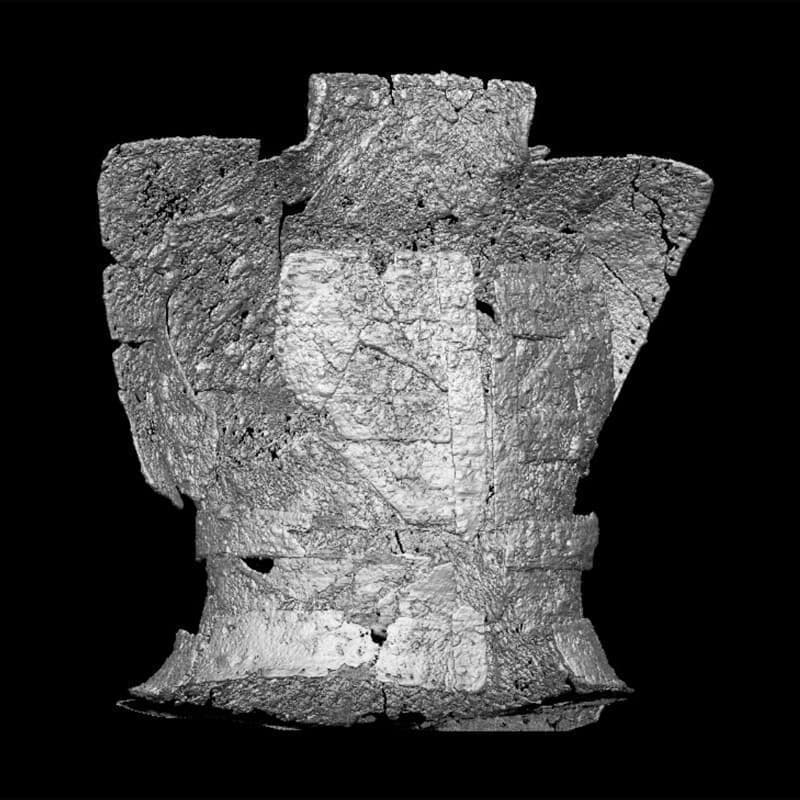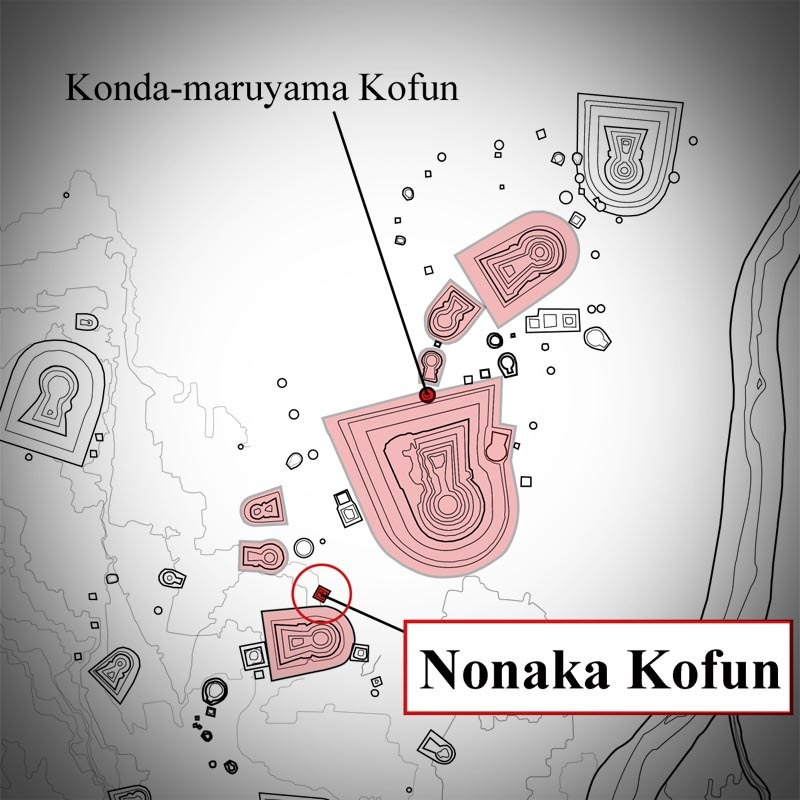What is The Mozu-Furuichi Kofun Group?
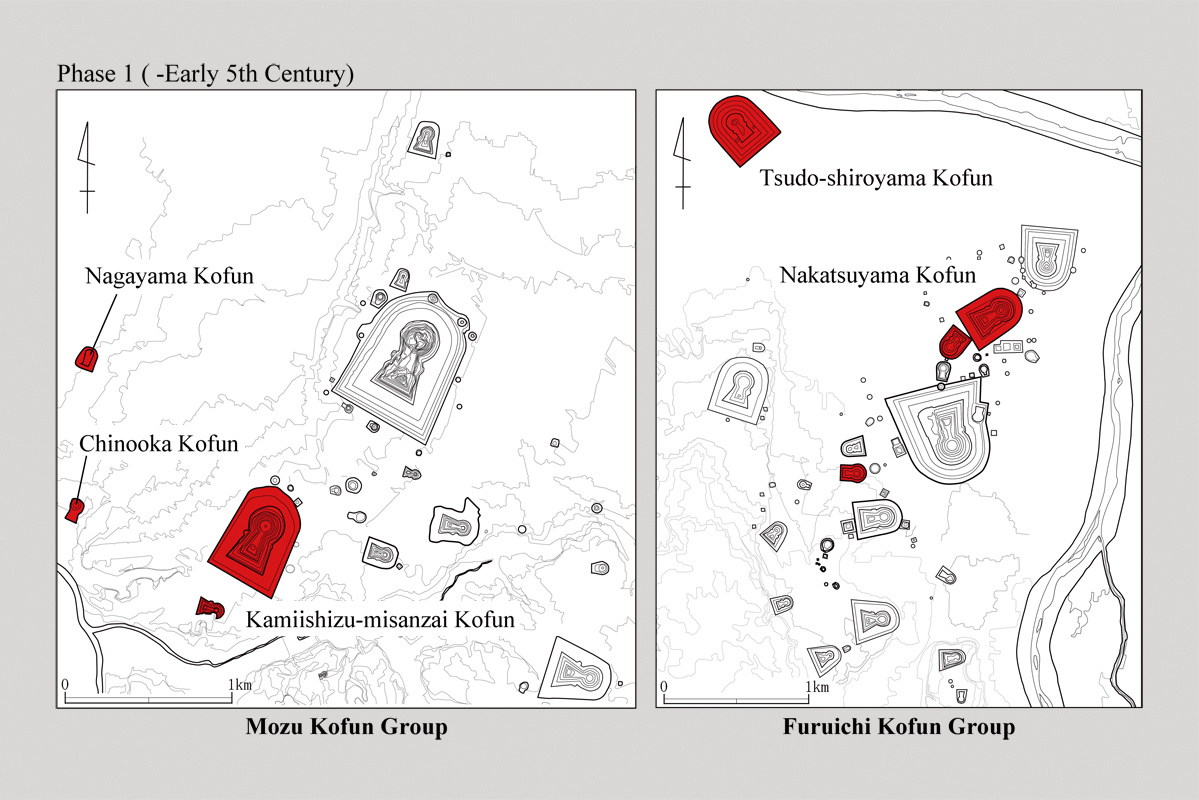
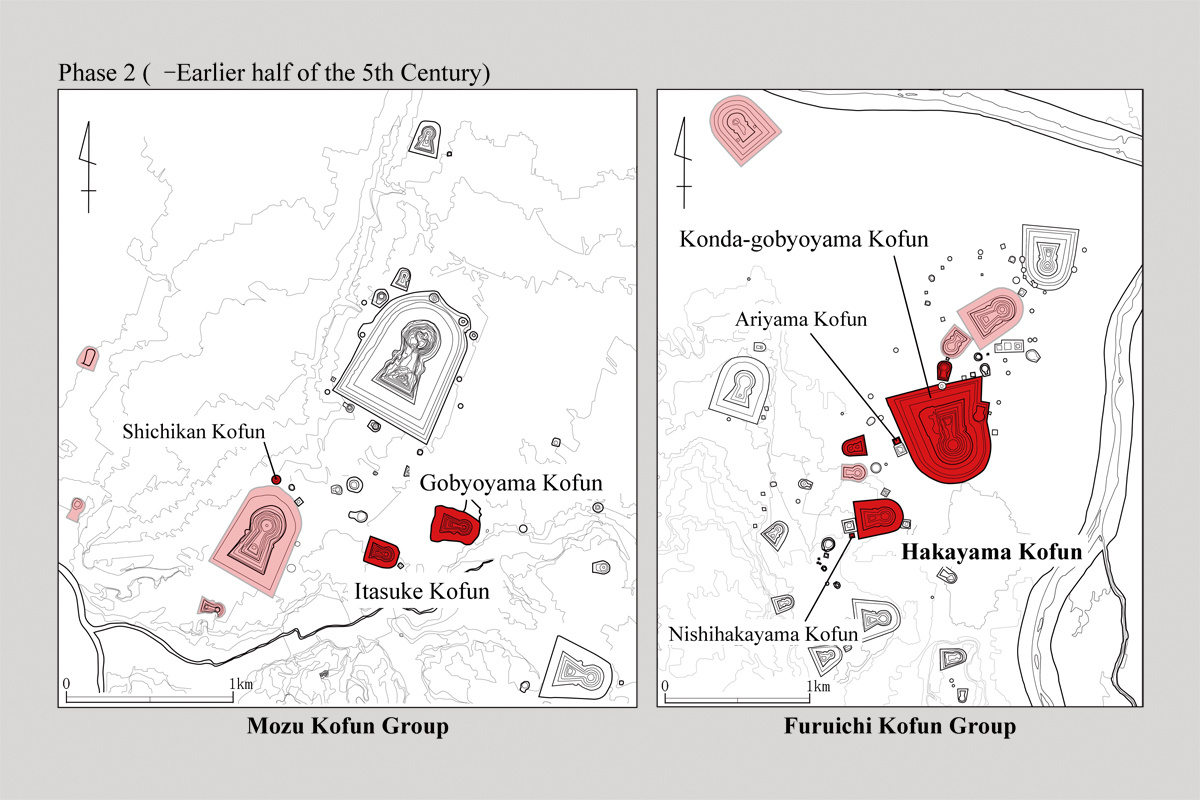
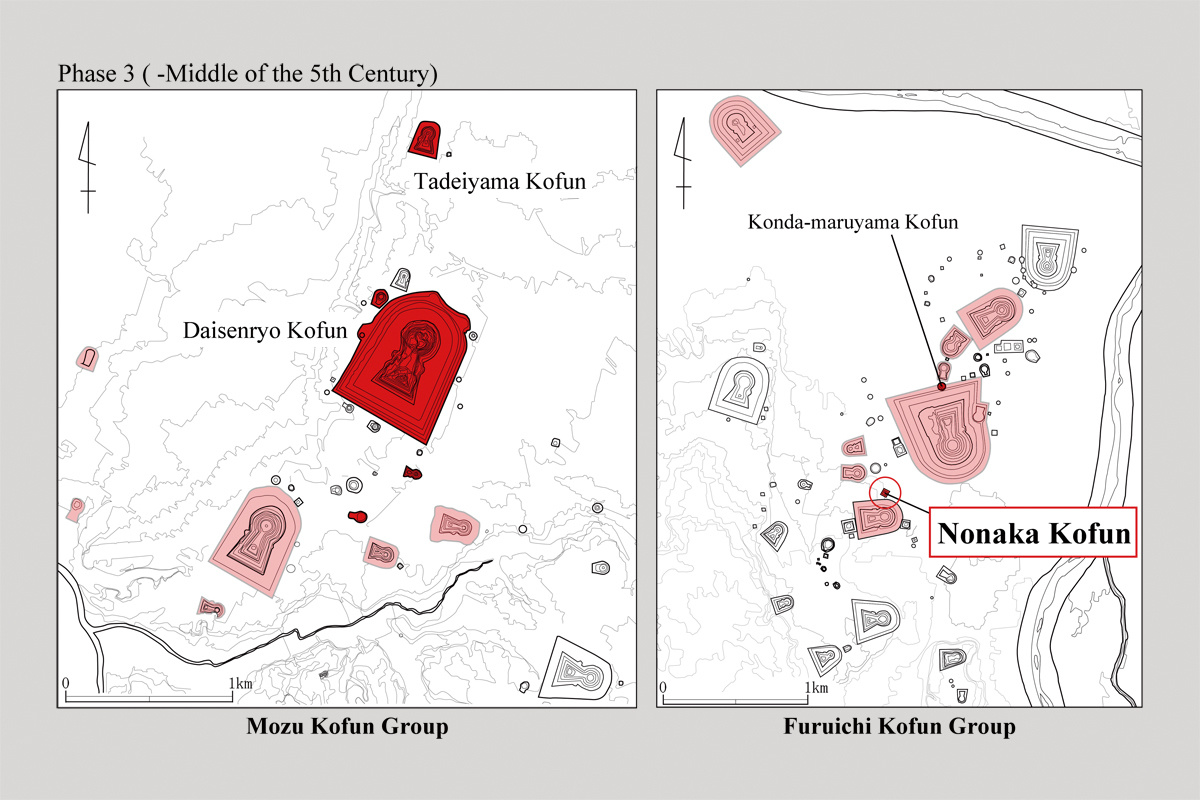
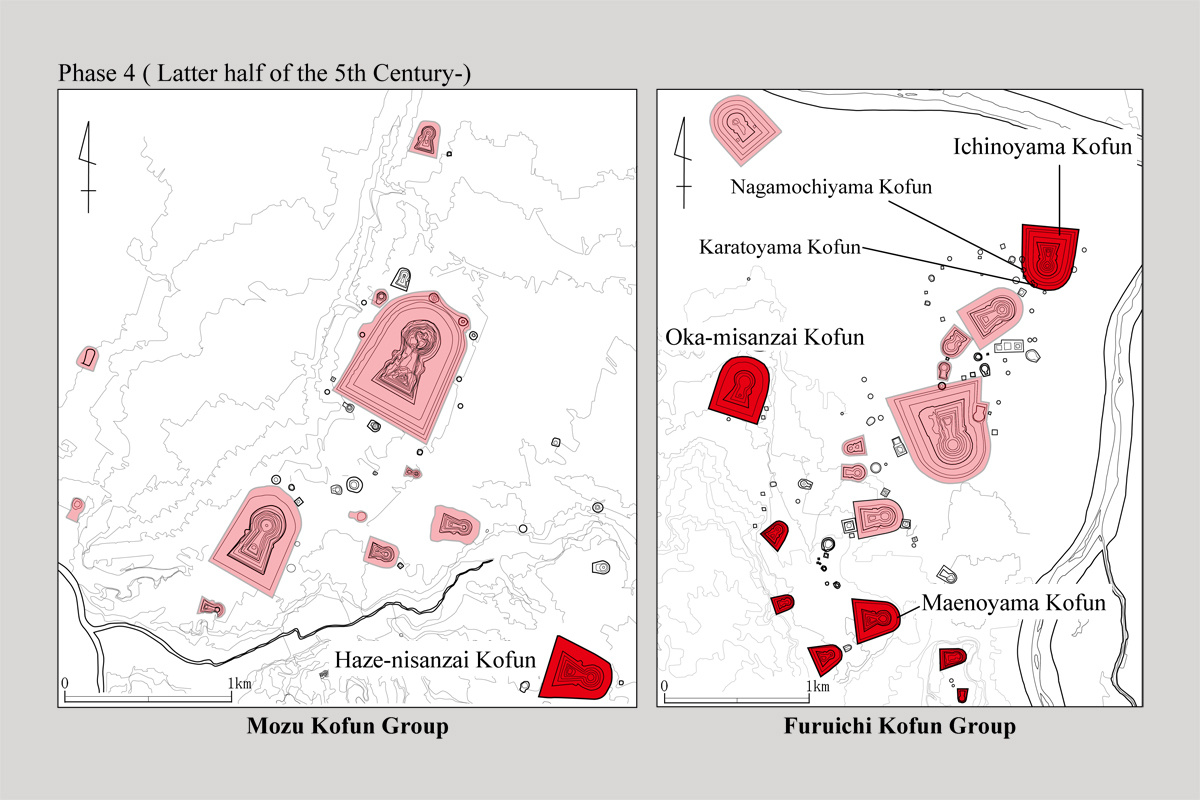
The Furuichi Kofun Group, spread across Fujiidera and Habikino Cities in Osaka Prefecture, is one of the largest kofun groups in Japan. It contains many large keyhole-shaped tombs with round rear mounds such as the Konda-Gobyoyama Kofun (Ojin-tenno-ryo Kofun), which has a burial mound 425 meters long. The group likewise contains a diverse variety of tombs, including the subsidiary tombs attached to the larger keyhole-shaped tombs as well as many other small tombs (round, rectangular, or scallop-shaped).
At the same time, the Mozu Kofun group, located in Sakai City, is of similar scale, including perhaps the most famous of all the Kofun in Japan—Daisenryo Kofun (Nintoku-tenno-ryo Kofun)--as well as many large keyhole-shaped tombs and square or rounded tombs of various sizes.
This Mozu-Furuichi Kofun Group has drawn attention as a World Heritage Site not only for its many large tombs but also for the many interesting points in the process of its formation.
Here, we will explore The Mozu-Furuichi Kofun Group over four major eras.
1. The earliest era of The Mozu-Furuichi Kofun Group
The earliest kofun built in The Mozu-Furuichi Kofun Group are the Mozu group Chinooka and Nagayama Kofun and the Furuichi group Tsudo-Shiroyama Kofun. Of these, the Tsudo-Shiroyama Kofun can be said, based on its scale and the use of a typical oblong chest-shaped stone coffin, to be a large tomb truly suited to the launch of a new era.
The Nakatsuyama Kofun, built next in the Furuichi group after the Tsudo-Shiroyama Kofun, is an even larger version, with a tomb mound 290 meters long. We may discern from these that the foundation of force for the Furuichi group was absolutely solid.
Elsewhere, in the Mozu group, the Chinooka Kofun and Nagayama Kofun were succeeded a little later on by the Kamiishizu-Misanzai Kofun (Richu-tenno-ryo Kofun). The Kamiishizu-Misanzai Kofun, with a burial mound 365 meters long, is the third largest in Japan after the Daisenryo Kofun and Konda-Gobyoyama Kofun.
The Shichikan Kofun is among its subsidiary tombs. While the Shichikan Kofun itself has already been lost, the details of its relics have been reported in recent years, bringing to light its importance in the investigation of the Mozu Kofun Group. It contained an abundant selection of burial goods in both quantity and quality, including large quantities of weapons, arms, horse tack, gilt-bronze belt buckles, and so on.
Another important tomb from this period is the Mozu-Otsukayama Kofun.
Once located south of the Kamiishizu-Misanzai Kofun, it was a large keyhole-shaped tomb with round rear mound, with a burial mound 168 meters long. However, it was lost in the residential development after the war. Currently the remains of the kofun can be seen on the street where it was.
It is the largest of the tombs to fall victim to postwar residential development. Relics, once destroyed, cannot be repaired as they were. Once again we realize the importance of their preservation.

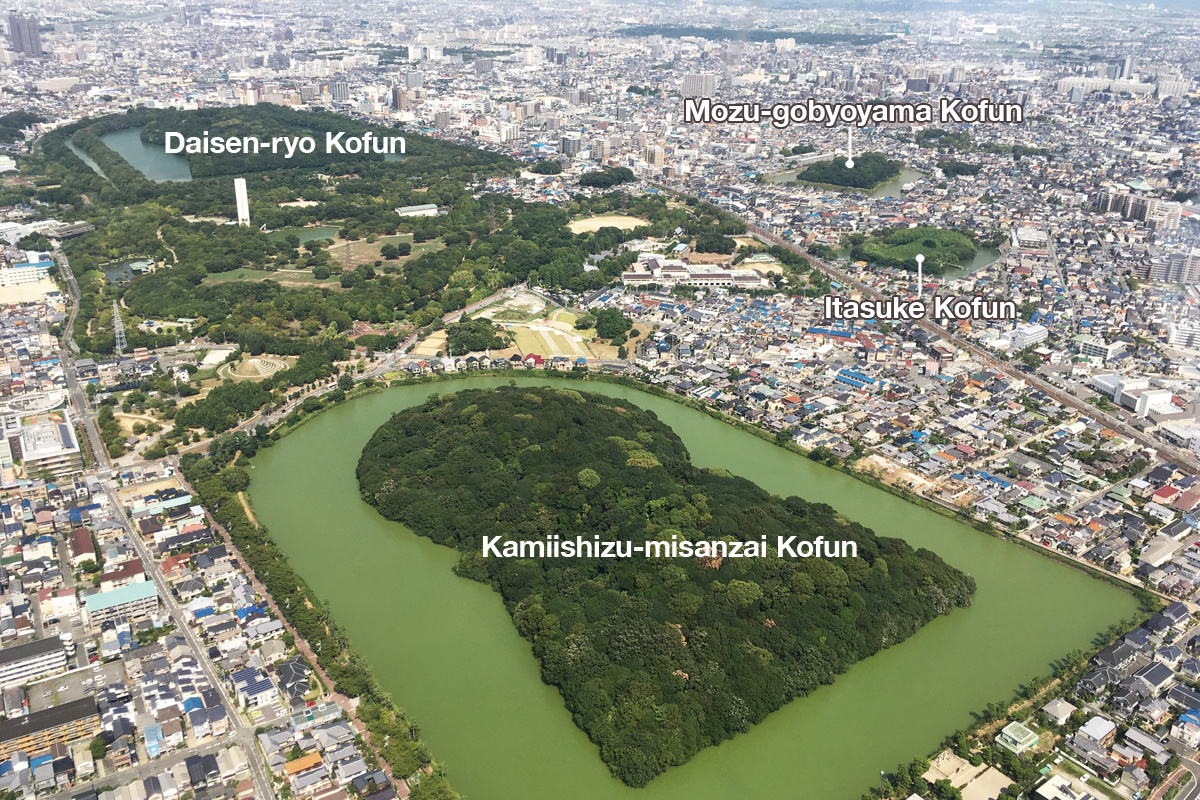
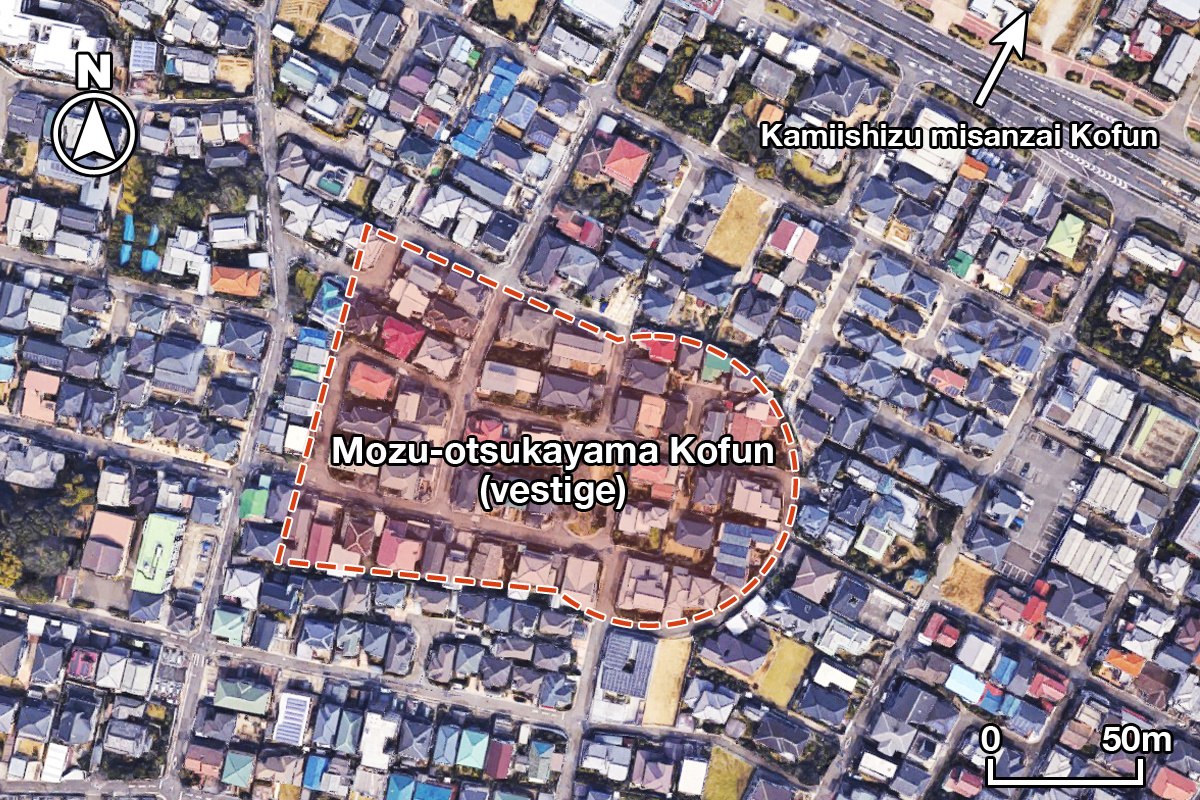

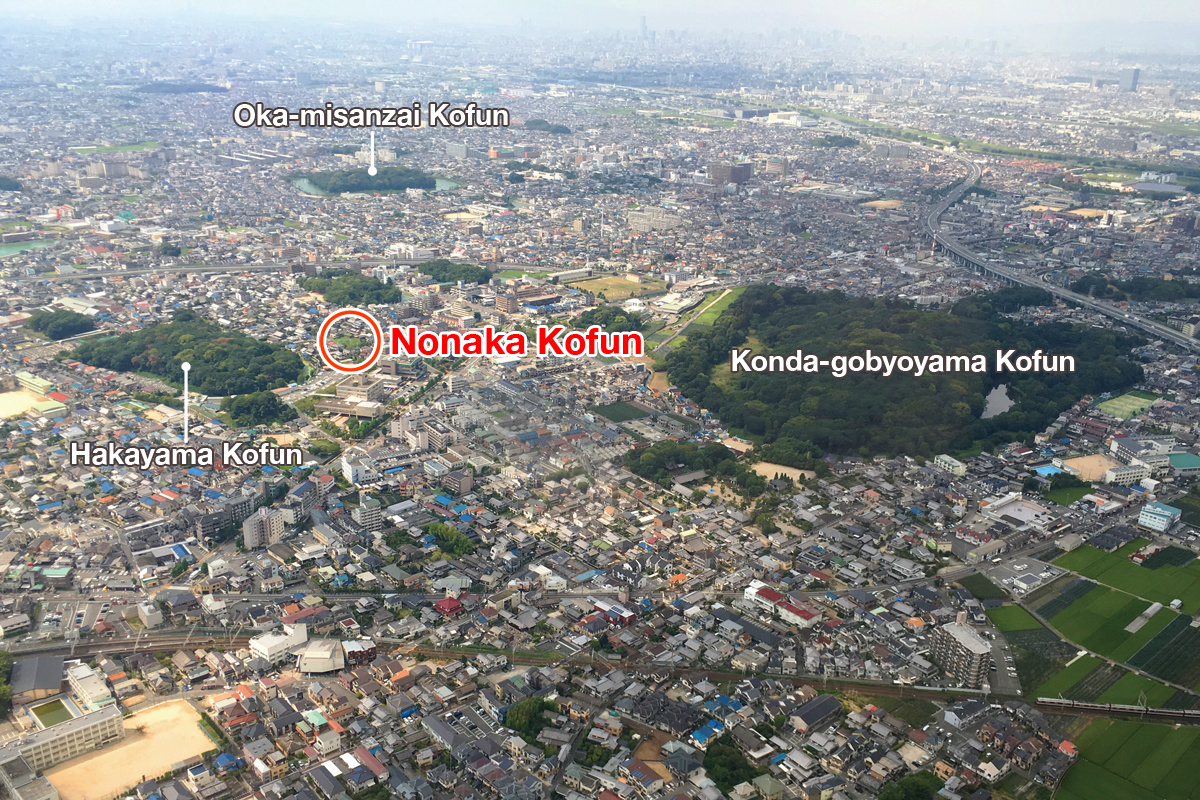
2. The era of the Konda-Gobyoyama Kofun
While large kofun were built in Mozu and Furuichi during the earliest era, it was thereafter that the Furuichi Kofun Group hit its stride.
Built next after the Nakatsuyama Kofun was the largest of the group, the Konda-Gobyoyama Kofun. In terms of area, it is said to be the largest in Japan, exceeding the Daisenryo Kofun. The Konda-Gobyoyama Kofun is positioned in the very middle of the central group of large tombs located on the east of the Furuichi Kofun Group, which spreads from north to south.
The tomb includes a notable subsidiary tomb: the Ariyama Kofun.
Like the Nonaka kofun, the Ariyama Kofun was excavated by Kitano Kohei of Osaka University, who discovered many iron artifacts. Along with the Nonaka kofun, it is an important clue to the understanding of The Mozu-Furuichi Kofun Group.
The Ariyama Kofun iron artifacts are characterized by an absence of armor and a percentage of weapons and agricultural and other tools larger than that of the Nonaka kofun. While both are subsidiary tombs containing large numbers of iron burial goods, their natures are entirely different.
The Mozu Kofun Group, on the other hand, was building fewer large-scale kofun during this period. However, in terms of the whole country. the tombs (such as the Itasuke Kofun, famous for its preservation movement) are quite large enough.
In this way, the Mozu and Furuichi Kofun Groups built ultra-large-scale tombs not consistently at the same pace but, when viewed in detail, at varying paces.
3. The era of the Daisenryo Kofun
Built next after the Konda-Gobyoyama Kofun, the largest in the Furuichi Kofun Group, was its Mozu equivalent. This is the Daisenryo Kofun. It became the largest tomb not only in the Mozu Kofun Group but in the whole of Japan. The burial mound length was found in a recent survey to exceed 500 meters.
Records remain of storm damage to the front part of the Daisenryo Kofun during the Meiji era, in which a stone chamber and stone coffin (oblong chest-shaped stone coffin) were exposed. The burial goods discovered at that time cannot be viewed now, but the Sakai City Museum (external link) includes an exhibit of a pictorial diagram of the goods and a model reproducing the stone coffin.
No large tombs were built in the Furuichi Kofun Group during this period. However, that does not mean that no tombs were built at all.
It was between the building of the Konda-Gobyoyama Kofun and that of the Daisenryo Kofun that the focus of this project, the Nonaka kofun, was constructed.
The Nonaka kofun’s main mounded tomb, the Hakayama Kofun (a keyhole-shaped tomb with a round rear mound), is thought to have been built around the same time as the Konda-Gobyoyama Kofun, a little before the Nonaka kofun. As a subsidiary tomb built after the main tomb was complete, the Nonaka kofun was probably built fairly soon afterward.
Given that the Nonaka kofun contained special facilities for the burial of many weapons and arms, it is not clear whether anyone was interred there. Debate continues today on whether the tomb had an occupant. If so, it is likely that those buried in the Nonaka kofun and in the Hakayama Kofun were active during the same time period.
The Konda-Maruyama Kofun, a subsidiary of the Konda-Gobyoyama Kofun, was likewise built after its main tomb. The gilt-bronze horse tack and other artifacts recovered from this tomb have been designated as National Treasures and are preserved in the neighboring Konda-Hachimangu Shrine.
While the Nonaka kofun mainly contained large amounts of armor and weapons, this tomb is characterized by its small number and high quality of artifacts.
In What is The Mozu-Furuichi Kofun Group?” (Part 2), the ending of this group is discussed.

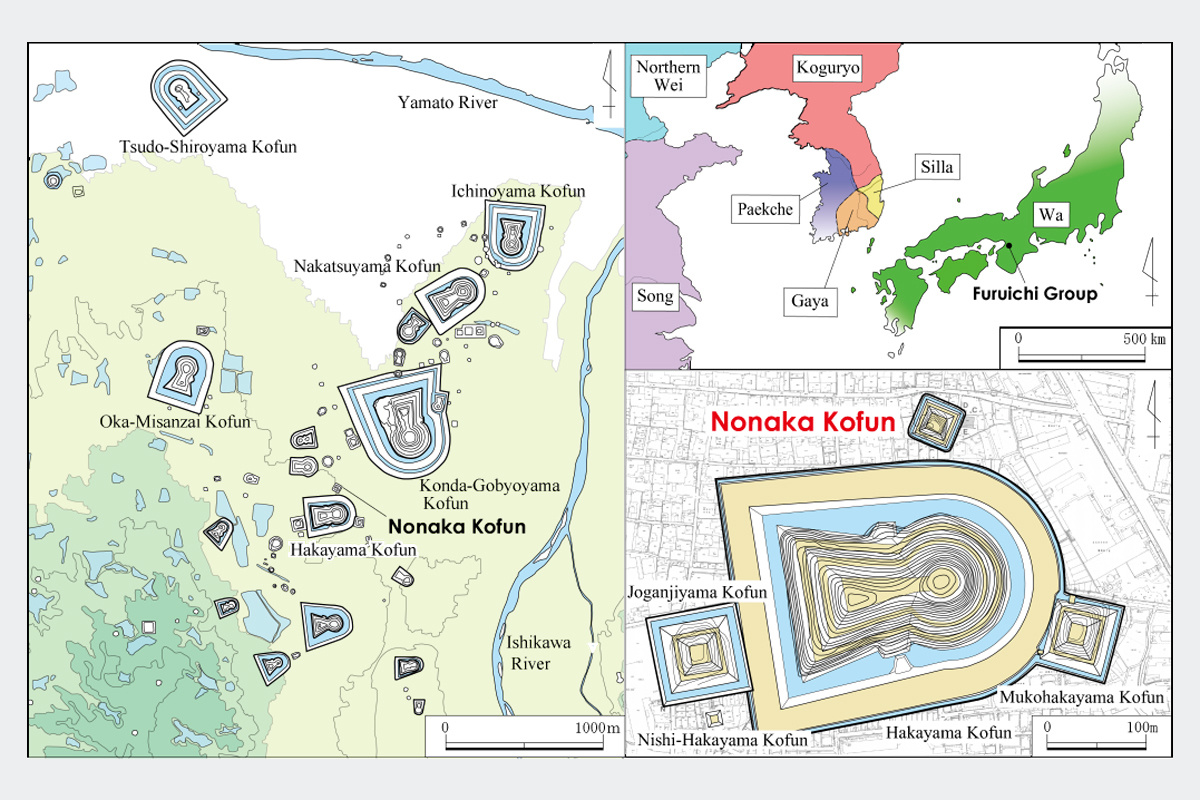
CONTENTS
Project overview
The Nonaka Kofun-period mounded tomb (referred to below as Kofun) contains many weapons and arms such as suits of armor, suggesting the force and political strategy of the Yamato government of the time.
Mozu-Furuichi Kofun Group
The Mozu-Furuichi Kofun Group in Osaka Prefecture was registered as a UNESCO World Heritage Site on July 6, 2019, and is one of Japan’s largest kofun groups.
Nonaka Kofun 3D imaging
You can see the abundant weapons and armor excavated from Nonaka Kofun in 3D images.
